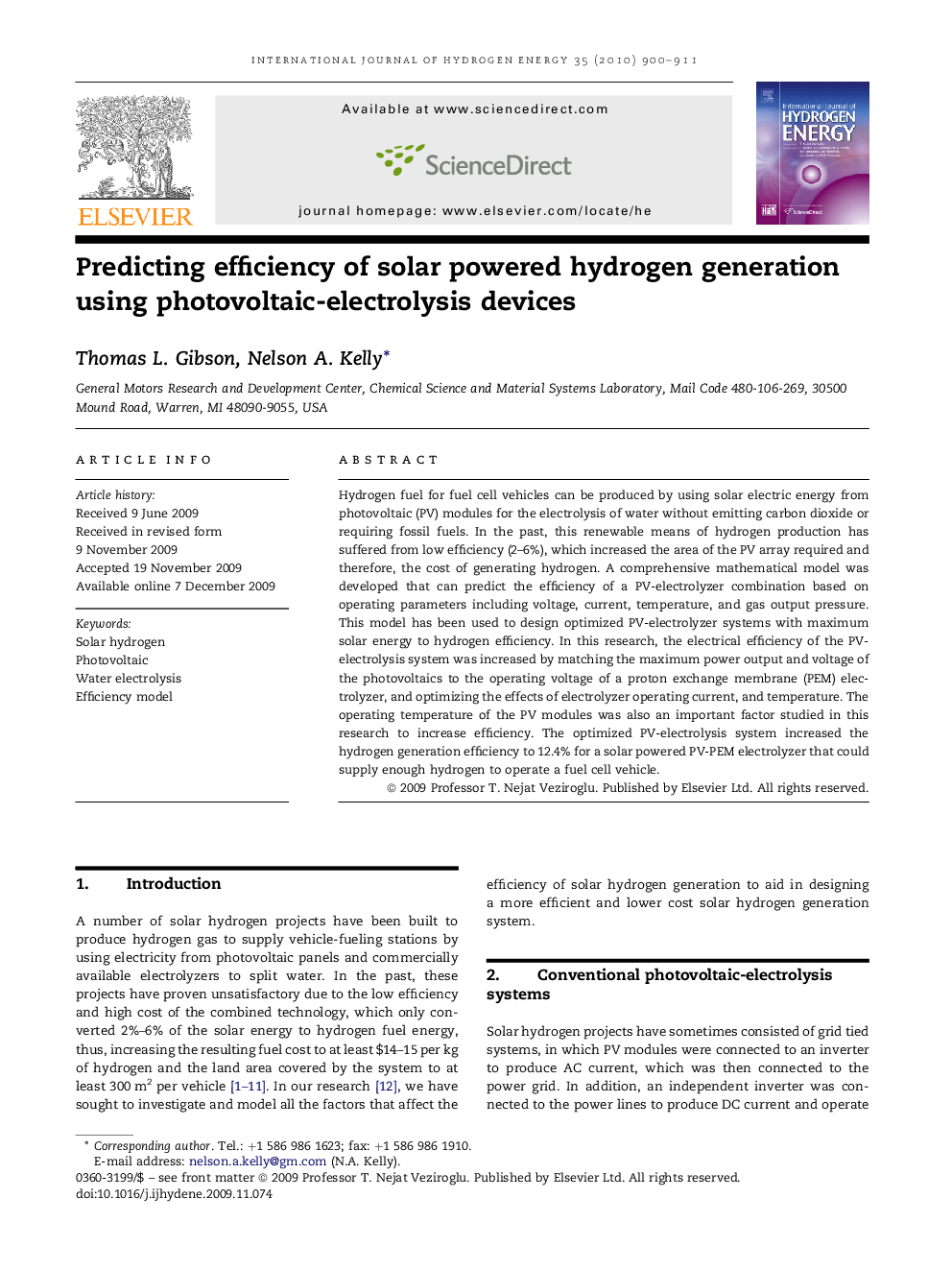| Article ID | Journal | Published Year | Pages | File Type |
|---|---|---|---|---|
| 1273480 | International Journal of Hydrogen Energy | 2010 | 12 Pages |
Hydrogen fuel for fuel cell vehicles can be produced by using solar electric energy from photovoltaic (PV) modules for the electrolysis of water without emitting carbon dioxide or requiring fossil fuels. In the past, this renewable means of hydrogen production has suffered from low efficiency (2–6%), which increased the area of the PV array required and therefore, the cost of generating hydrogen. A comprehensive mathematical model was developed that can predict the efficiency of a PV-electrolyzer combination based on operating parameters including voltage, current, temperature, and gas output pressure. This model has been used to design optimized PV-electrolyzer systems with maximum solar energy to hydrogen efficiency. In this research, the electrical efficiency of the PV-electrolysis system was increased by matching the maximum power output and voltage of the photovoltaics to the operating voltage of a proton exchange membrane (PEM) electrolyzer, and optimizing the effects of electrolyzer operating current, and temperature. The operating temperature of the PV modules was also an important factor studied in this research to increase efficiency. The optimized PV-electrolysis system increased the hydrogen generation efficiency to 12.4% for a solar powered PV-PEM electrolyzer that could supply enough hydrogen to operate a fuel cell vehicle.
